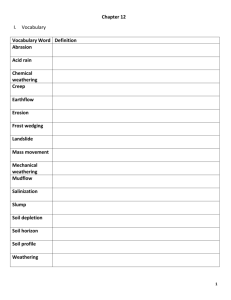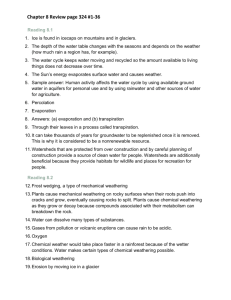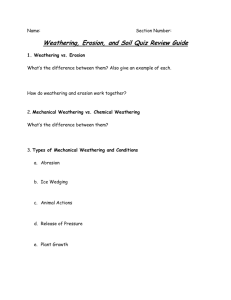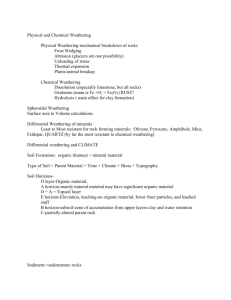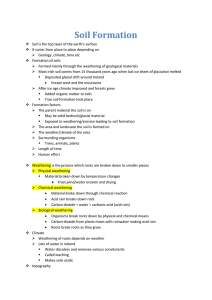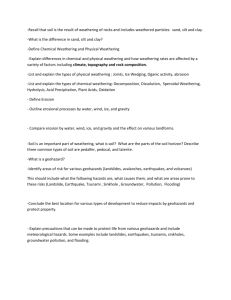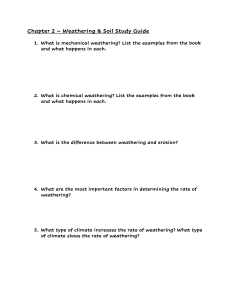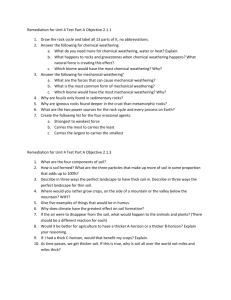Homework Ch 5, 6 Vocabulary Mechanical Weathering Frost
advertisement
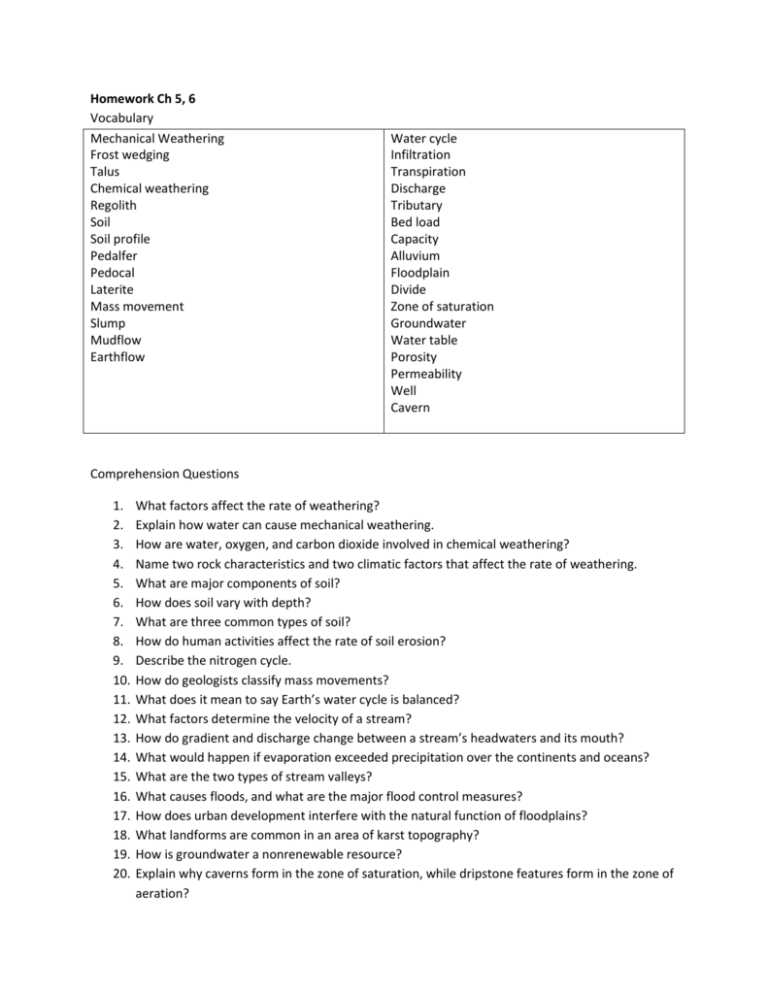
Homework Ch 5, 6 Vocabulary Mechanical Weathering Frost wedging Talus Chemical weathering Regolith Soil Soil profile Pedalfer Pedocal Laterite Mass movement Slump Mudflow Earthflow Water cycle Infiltration Transpiration Discharge Tributary Bed load Capacity Alluvium Floodplain Divide Zone of saturation Groundwater Water table Porosity Permeability Well Cavern Comprehension Questions 1. 2. 3. 4. 5. 6. 7. 8. 9. 10. 11. 12. 13. 14. 15. 16. 17. 18. 19. 20. What factors affect the rate of weathering? Explain how water can cause mechanical weathering. How are water, oxygen, and carbon dioxide involved in chemical weathering? Name two rock characteristics and two climatic factors that affect the rate of weathering. What are major components of soil? How does soil vary with depth? What are three common types of soil? How do human activities affect the rate of soil erosion? Describe the nitrogen cycle. How do geologists classify mass movements? What does it mean to say Earth’s water cycle is balanced? What factors determine the velocity of a stream? How do gradient and discharge change between a stream’s headwaters and its mouth? What would happen if evaporation exceeded precipitation over the continents and oceans? What are the two types of stream valleys? What causes floods, and what are the major flood control measures? How does urban development interfere with the natural function of floodplains? What landforms are common in an area of karst topography? How is groundwater a nonrenewable resource? Explain why caverns form in the zone of saturation, while dripstone features form in the zone of aeration?

